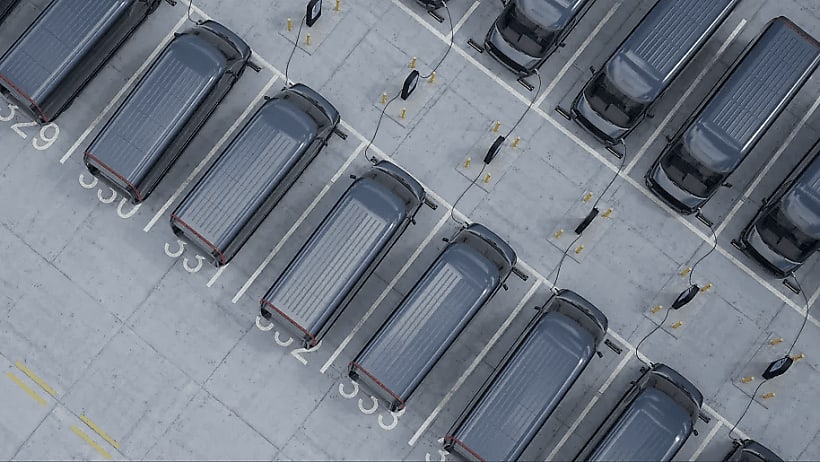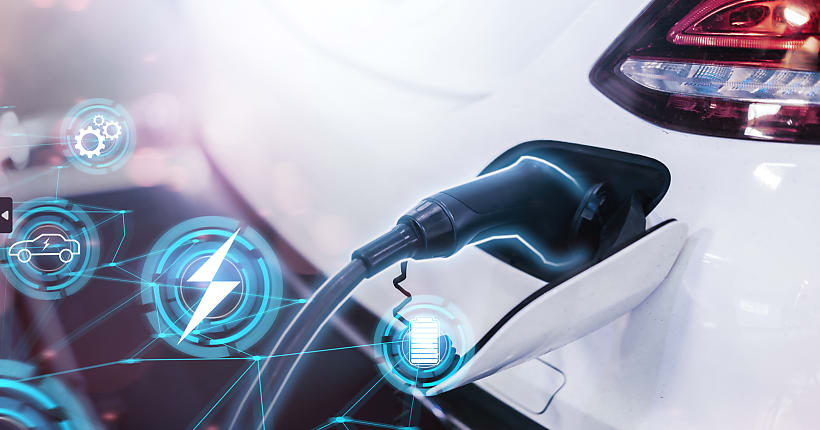Delphine Clement, Energy Transition Sales Director at Eaton, brings over 20 years of experience in power management across France, China, and Switzerland. Passionate about energy transition, she focuses on renewables, electrification, and innovative technologies. In this piece she delves into how you can successfully transition to an electric fleet and why this should be a priority for your business.
With the phase out of petrol and diesel vehicles approaching, you may be looking at fleet electrification as a solution. Assuming that’s the case, you’re probably considering how EV fleets differ from conventional fleets, not least when it comes to refueling.
As a fleet operator or manager, you’ve long been concerned with securing the best fuel deals and managing costs. And you know that introducing EVs changes all of this. In my role as Energy Transition Sales Director at Eaton, an intelligent power management company, I know how complex it can be for fleets to transition away from petrol and diesel (there’s so much to think about!).
At the same time, I’m excited about new opportunities that electrification can bring to fleets. I’ll gladly walk you through some of the possibilities. But for these opportunities to make sense, we must look at the context that fleets like yours are currently grappling with. So, let’s cover that first.
What is fleet electrification?
Fleet electrification refers to the process of transitioning a fleet of vehicles from traditional internal combustion engine (ICE) vehicles to electric vehicles (EVs). This shift involves replacing conventional fuel-powered vehicles with electric alternatives, such as battery-electric vehicles (BEVs) or plug-in hybrid electric vehicles (PHEVs). The goal of fleet electrification is to reduce carbon emissions, decrease dependence on fossil fuels, and improve air quality.
The context of fleet electrification
The price of fossil fuels continues to be a big issue for most fleets. Which is why I’m not surprised when fleet managers ask questions like: Can electrification help me cut costs—and if so, when and how should I make the switch? It’s not just a matter of economics, however.
Policy and regulation
With new policies and regulations, fleets are pushed to the cutting of emissions and thus electrification of the fleet. The internal combustion engine (ICE) is on the way to being consigned to history. The UK and EU will impose bans on the sale of new ICE cars and LCVs by 2035. Just last month, the EU announced a timeline for cutting emissions from diesel-powered trucks and buses, with sales of these vehicles virtually eliminated by 2040.
Infrastructure
The EU’s Sustainable and Smart Mobility Strategy aims to achieve, amongst many other things, a 90% reduction in the transport sector’s emissions by 2050. They also aim for the installation of infrastructure to support three million EV chargers by 2030. Speaking of infrastructure: As part of its “Fit for 55”policy, the EU will roll out legislation such as the alternative fuel infrastructure regulation (AFIR) and the Energy Performance of Buildings Directive (EPBD).
Under the AFIR, the EU plans to deploy fast charging stations along the continent’s main transport veins, starting in 2025. The EPBD, meanwhile, will compel increasing building renovation rates, with new buildings required to be zero emissions by 2030. Part of the EPBD involves installing EV charging infrastructure in all new and existing private buildings. Non-EU countries are also moving in a similar direction as the EPBD.
EV popularity
The key to embarking on fleet electrification is switching to an EV fleet. On top of all the above, vehicle manufacturers are prioritising the marketing of their EV models, making it highly desirable to drive an EV, whether for work or leisure. The switch to EVs is therefore becoming popular with professional drivers—many of them want to go electric. So, fleets seeking a fresh way to retain drivers can take hope in electrification. The economic, regulatory and social aspects of the switch to EVs are fully aligned. There are opportunities to translate all of this into improving your own fleet development strategy.

Key pillars to fleet electrification
There are six key pillars to fleet electrification to be aware of: charging infrastructure, charging costs, energy use, battery health, job planning and business optimisation. Charging infrastructure and energy use are foundational to any fleet’s electrification strategy, so I’ll primarily focus on these dynamics.
Charging infrastructure
It’s easy to imagine that an electric fleet’s EV charging needs can be met by a commercial provider in return for a single fee—just like paying at the fuel pump. But don’t limit yourself to this model! EV charging is different: A good strategy, supported by the right tactics, enables your business to reduce costs.
When you factor in high charging demand at workplaces and homes, there’s a strong business case for fleets to integrate EV charging infrastructure with any buildings they own. Savings can be made by combining energy storage and energy management software:
- It can be added without costly civil engineering works often associated with grid upgrades.
- It allows users to store off-peak energy and any self-generated renewable power they can make available from sources such as on-site solar photovoltaic generation.
- Stored, low-cost power can be used at times of expensive peak demand, what’s known as “peak shaving” as it reduces load on the grid.
Energy use of an electric fleet
With a good fleet electrification strategy you will be able to save on traditional fuel and have insights in energy use and savings. With traditional petrol or diesel vehicles, energy savings largely boil down to prices at the pump. EV charging allows you to tap into potential existing electricity from the grid, so the savings go far beyond fuel prices. If your business invests in the appropriate infrastructure, it can save on every one of its energy bills. Taking a holistic approach to planning upfront can prevent power management issues and costly grid upgrades.

How to develop an electrification strategy
At this point, you may be wondering how to develop a fleet electrification strategy based on maximising your grid potential and return on investment. Your first step is choosing the best solutions for your fleet—the ones that can help you scale. Here’s a glimpse of what you can do with the right software and correctly designed infrastructure:
- Run simulations to create different scenarios—to de-risk your investment and build the right infrastructure for today and tomorrow
- Operate a modular charging infrastructure for your fleet as well as for external uses (such as when visitors park at your business) mixing regular and high speed (AC and DC) chargers as required
- Analyse your fleet data to monitor electricity consumption and costs, whether your vehicles are on the road or parked in your company lot or at your driver’s home
- Control the total cost of ownership of your charger network and total cost of mobility
- Monitor the energy performance of your building, manage energy assets securely and scale up infrastructure for more capacity or more power when needed
Importantly, you want to ensure business continuity. You need an electrification strategy that will enable your team to switch from ICE vehicles to EVs in a structured and optimal way, and to scale up when needed. We cannot overstate the value of support, for your operations as a whole and for your team of people, as your fleet transitions.
Making the most of your transition involves securing and managing multiple EV service providers. Like Webfleet, Eaton is a partner on the Bridgestone EV Services Platform, which integrates mobility and energy data to streamline these processes. Would you like to dive more deeply into what I’ve discussed here? Feel free to download Eaton’s essential guide to fleet EV charging.




